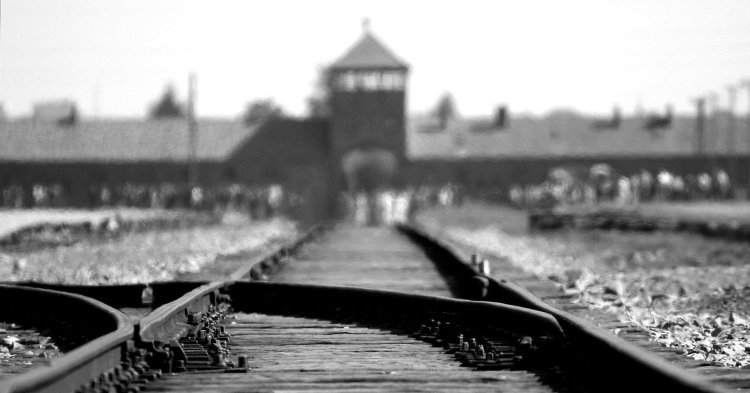Leave all hope, you who enter - Dante Alighieri
In April 1945, the Allies penetrated deep into the territory of Nazi Germany. With the end of the war in sight, all those who were aware of the crimes they had committed tried to destroy as much evidence as possible. It was Nazi Germany that was responsible for the Holocaust and the Final Solution has marked history as one of humanity’s darkest actions. Frighteningly, before the gates of Auschwitz, a historian’s explanatory power seems rather insignificant.
The history of Nazi Germany cannot be seen in isolation from what was the Nazi world view. The Holocaust was the result of National Socialist ideology, clearly present in Mein Kampf. Hitler never hid his essentially racist conception of humanity nor his contempt for democracy and the values it represents, the individual having value only as an instrument of the racist state.
Racist doctrines had taken deep root in the ideas of most peoples of the Old Continent long before the Nazis came to power in Germany. Inspired by Charles Darwin’s theory of natural selection, Social Darwinism spread the idea that the “strongest” had a natural right to rule and dominate the “weakest”. The Jewish question was, for many, not just an economic issue, but one of race and culture. Judaism was the ruin of all the peoples of Europe.
On the beach at Foz, in Porto, a mother was heard shouting to her son: “Come immediately, you are forbidden to play with the Jewish boy.”
According to the Nazis, the rebirth and redemption of Germany would only be possible through a policy that put into practice the principles of racial biology, eugenics and anti-Semitism. They aimed to create a “pure race” and homogeneous society that recognised the “natural” differences between human beings. The Nuremberg Laws of 1935 translated this policy into practice, establishing the separation of Jews from the rest of society in order to protect “German blood and honour”.
H.S. Chamberlain, a theorist that heavily influenced Nazi ideology, stated that nothing conveys greater conviction than the consciousness of owning a race, that the man who belongs to a distinct and pure race never loses such a sense. He argued that race raises man above himself, giving him extraordinary, almost supernatural powers, separating him so clearly from the individual who emerges from the chaotic amalgam of peoples from all parts of the world.
Against the doctrine that held the equality of all human beings, National Socialism advocated the “hard but necessary” recognition of basic differences between human beings and created the necessary ideological basis for the Holocaust, laying the psychological and technical conditions for its realisation. From 1933 to 1945, persecution and genocide swept through Europe. The territory of Europe became a place of blood and tears. The Star of David became a symbol of hatred, the ghettos the embodiment of violent segregation and the freight trains set off towards the factories of death. Auschwitz is today one of the most powerful memories we should all carry.
Human beings are truthfully brilliant, for better or worse, and unfortunately some of the greatest technological advances have been made in times of conflict and used for evil. The German technology destined for destruction during World War II, like the V-2 rockets, was the same technology that put Man on the Moon. The work of Fritz Haber allowed the development of fertilizers that brought more abundance of food, but on the other hand, his discoveries contributed to the development of the gas used to kill millions of people during the Third Reich. It seems that for every good deed, there is always someone who seeks to make the worst out of human goodness, whether for profit or just plain evil. Faced with a frightening and familiar conjunction of circumstances in which human lives are despised, we must, more than ever, look back and learn from the brutalities of the past.
Envy is sneaky and we live today in a reality built on the scars of the past. Hatred exists steeped in our society, and while it may seem like an impossible place to come across any form of kindness, the brutality of the Nazis could not completely stifle acts of kindness, no matter how hard they tried. Schindler’s tree continues to grow, and his list is just one of many examples of faith in the human capacity to do good. Whoever saves one life, saves the whole world and as long as there are people who vehemently believe in this idea, hope will never be lost. The world is too dangerous a place to live, not because of those who do evil, but because of all those who watch suffering and consent to such acts.


Follow the comments: |
|
